15 Things to Do in Chokhatauri – Guria’s Offbeat Corner
Chokhatauri is an unknown area of the Guria region, west of Georgia. It offers rolling hills of lush greenery, medieval fortresses, a natural mineral water spring, and a gorgeous mountain resort. While the list of things to do in Chokhatauri might not be long, I decided to dedicate a separate post to it for personal reasons. After all, I am partly Gurian on my father’s side (my mother is from Kakheti), and this is where my family comes from.
Chokhatauri is the name of a municipality and the central town within its administrative border. The town itself is very sleepy and quiet, with few attractions. That’s why this guide focuses on providing more in-depth spots within the municipality rather than a typical city guide I usually write.
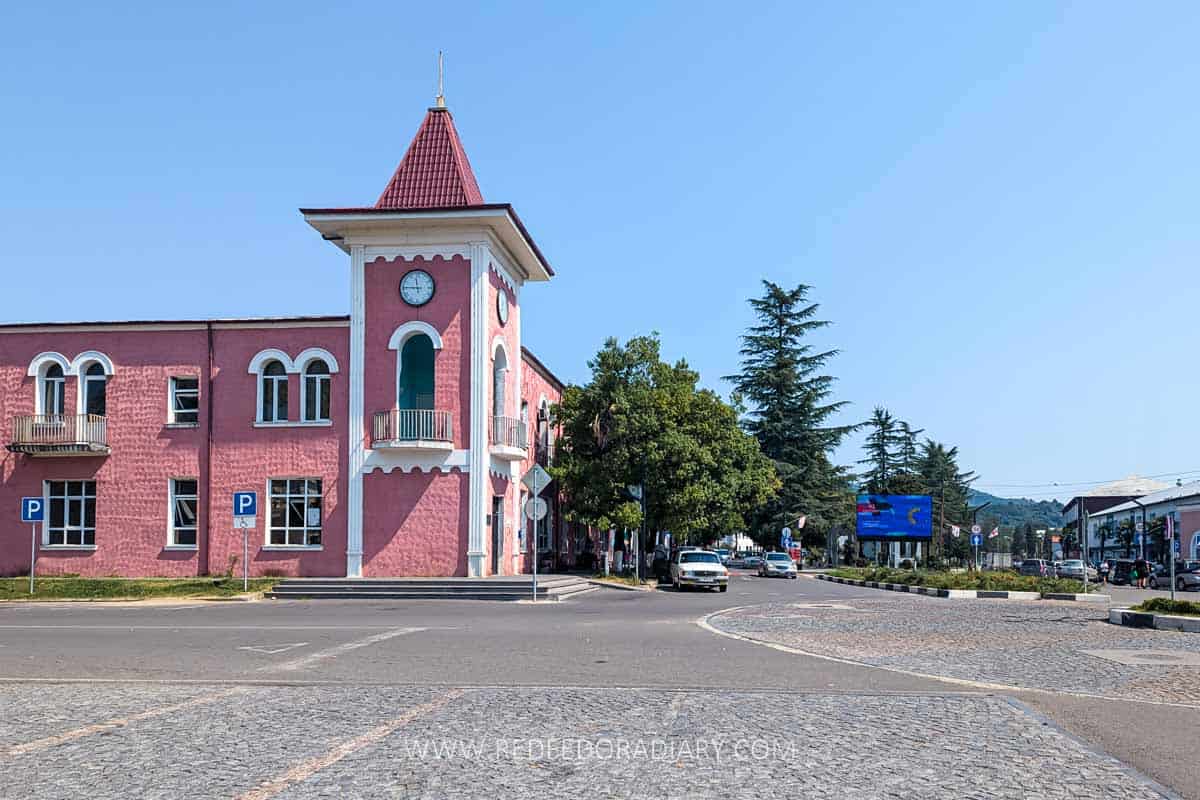
The places outlined here are spread out, and require a car. While a few marshrutka vans run within the municipality, their frequency is scarce, and they only go to places that are more or less popular and have a demand within the population.
Chokhatauri town has a few shops for groceries or basic household items, bakeries, and even a restaurant in the center. Every Sunday, there’s a regional bazaar to buy fruits and vegetables, meat, hazelnuts, or even livestock.
That said, don’t let this set off your trip here. If Guria is a less-known western region of Georgia among tourists, Chokhatauri is rarely on their radar, which might be something you are looking for.
In addition to giving you an ultimate Chokhatauri travel guide, I share my family story and include some family archival photos taken at our village house or Bakhmaro, the mountain resort. In the end, you’ll also find a list of other things to do in the Guria region.
My Travel Essentials
Get an eVisa: Check if you need one at iVisa and fill out the form to get your eVisa easily.
Book a flight: I use Skyscanner or WayAway. The latter offers cashback with a Plus membership.
Airport transfers: Avoid the hassle of public transport and pre-book a transfer with Gotrip.
Reserve a hotel: My go-to platform for hotels or apartments is Booking.com.
Wine tours: Eat This! Tours offer premium wine tours. Use code RFD5 to get 5% OFF.
Hiking & culture tours: WT Georgia is the best for unique trips. Email them Red Fedora & get 10% OFF.
Find best-suited tours: For other tours, entrance tickets, and activities, I use Viator or Get Your Guide.
Rent a car: With affordable prices, Local Rent is one of the best car rental platforms.
Hire a driver: GoTrip is ideal for long-distance private transfers at very reasonable prices.
Debit card: I have Wise (an alternative to Revolut) for local money withdrawals without hidden fees or high exchange rates.
eSIM: To avoid heavy roaming fees, use Airalo or Saily. Compare prices and GB packages. Use BAIA2592 on Airalo and BAIAIR6152 on Saily to get 3 USD on both.
Travel insurance: SafetyWing covers health insurance and has add-ons for adventure sports and electronics theft coverage.
Disclaimer: Some of the links in this post are affiliate links, which means I may earn a small commission if you buy something through them—at no extra cost to you. It helps support my blog and lets me share real, first-hand travel tips. Learn more
Understanding Chokhatauri municipality
Locals from the Chokhatauri called it (and still do) the ‘real Guria’ back in the day because the railway didn’t come up here and left it almost untouched by modern life, unlike the lowlands of Lanchkhuti or Ozurgeti.
On the other hand, it still sets Chokhatauri back in terms of tourist infrastructure, lack of transportation, and almost deserted villages.
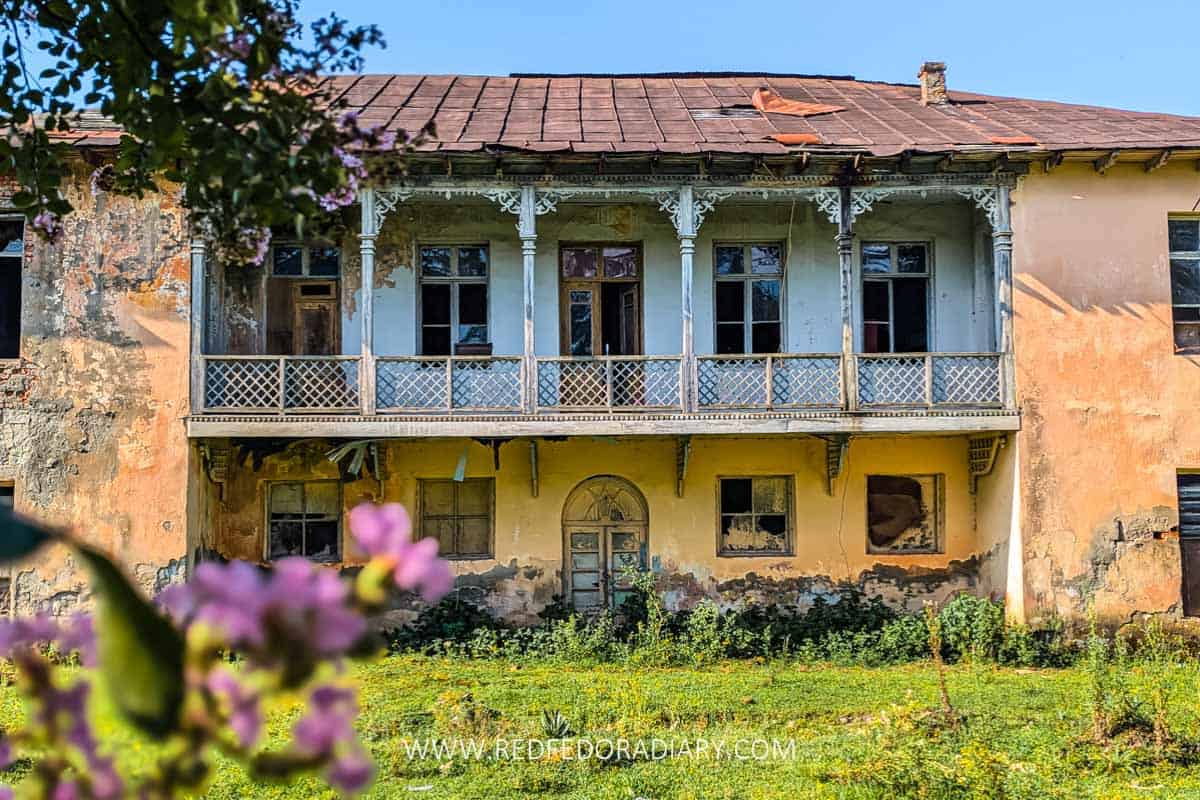
Chokhatauri municipality covers 820 sq km and incorporates 61 adjoining villages. It borders Imereti’s Samtredia to the north and Vani to the east, Adjara’s Khulo and Samtskhe-Javakheti’s Adigeni to the south, and Guria’s Ozurgeti and Lanchkhuti to the west.
Most of Chokhatauri is mountainous, with beech, oak, chestnut, fir, and plane forests. The area is characterized by a subtropical sea climate in the lowlands and a humid climate in the mountains.
Peak Mepistskaro is the highest point, at 2850 meters above sea level. The main river, Supsa, which starts from this peak, is the longest and most voluminous river in the Guria region. It is the only one that flows through all three municipalities before joining the Black Sea at the village, also named Supsa.
Like the rest of Guria, Chokhatauri is an agricultural area known for grain farming, viticulture, citruses (mainly tangerines and lemons), tea, and hazelnuts.
Nabeghlavi natural mineral spring, similar to Borjomi, is within the municipality. Unlike Borjomi, it has softer bubbles and is my personal favorite. You can find bottled Nabeglavi in every shop across the country.
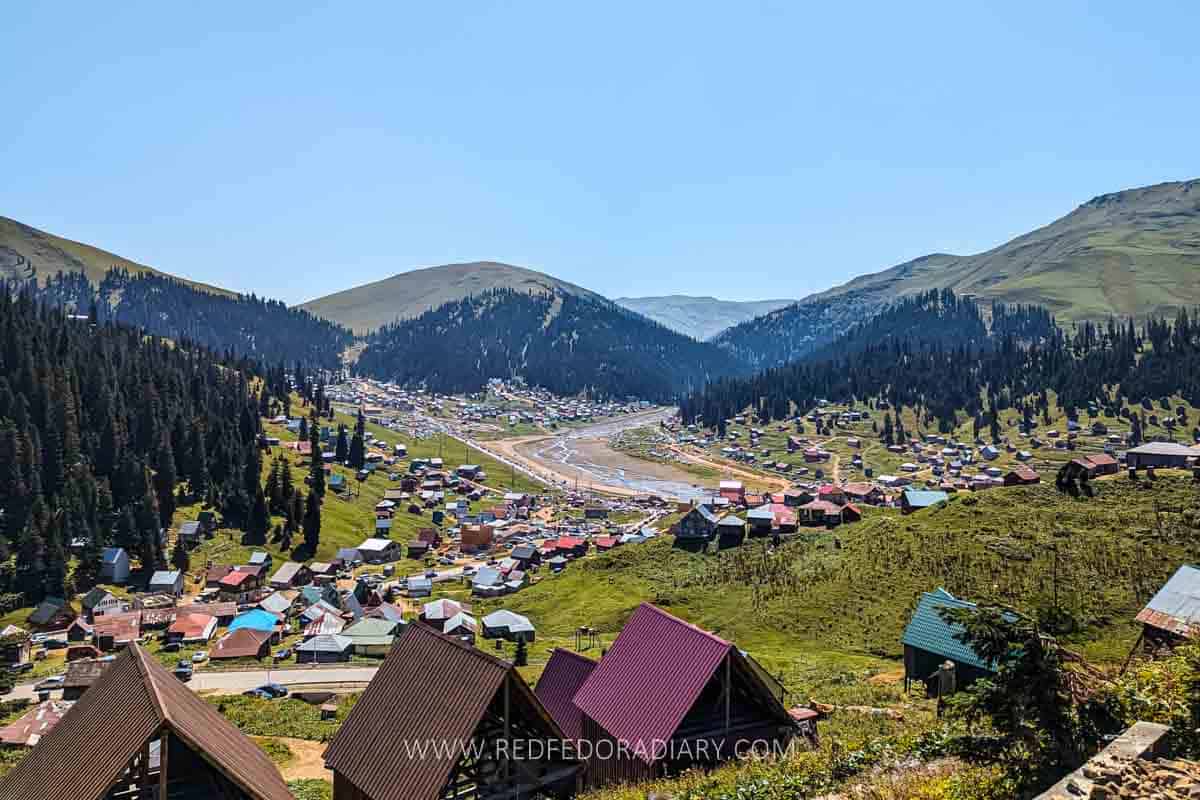
The area is also famous for its cultural and historical attractions, such as museums, churches, fortresses, and palaces. Bakhmaro Mountain Resort is the jewel of the area, where combined sea and mountain air create a unique atmosphere with healthy benefits for those with respiratory illnesses. Besides the cleanest and most unique air, Bakhmaro is known for its horse race and breathtaking sunsets and sunrises above the clouds, enjoyed from various viewpoints.
Chokhatauri doesn’t have waterfalls or lakes, but Jaji Lake is between alpine meadows and blue mountains, offering stunning views of the surroundings.
During the Soviet period, Chokhatauri had a branch of the Kutaisi auto factory, a car-tractor repair plant, four tea, wine, and silk factories, grocery and meat processing plants, a cinema, three hospitals, and a polyclinic, to name a few.
My family story
My father is from Guria. He was born in the small village of Bukitsikhe in Chokhatauri municipality and lived there until he was 15 before moving to Tbilisi to continue his studies in the capital.
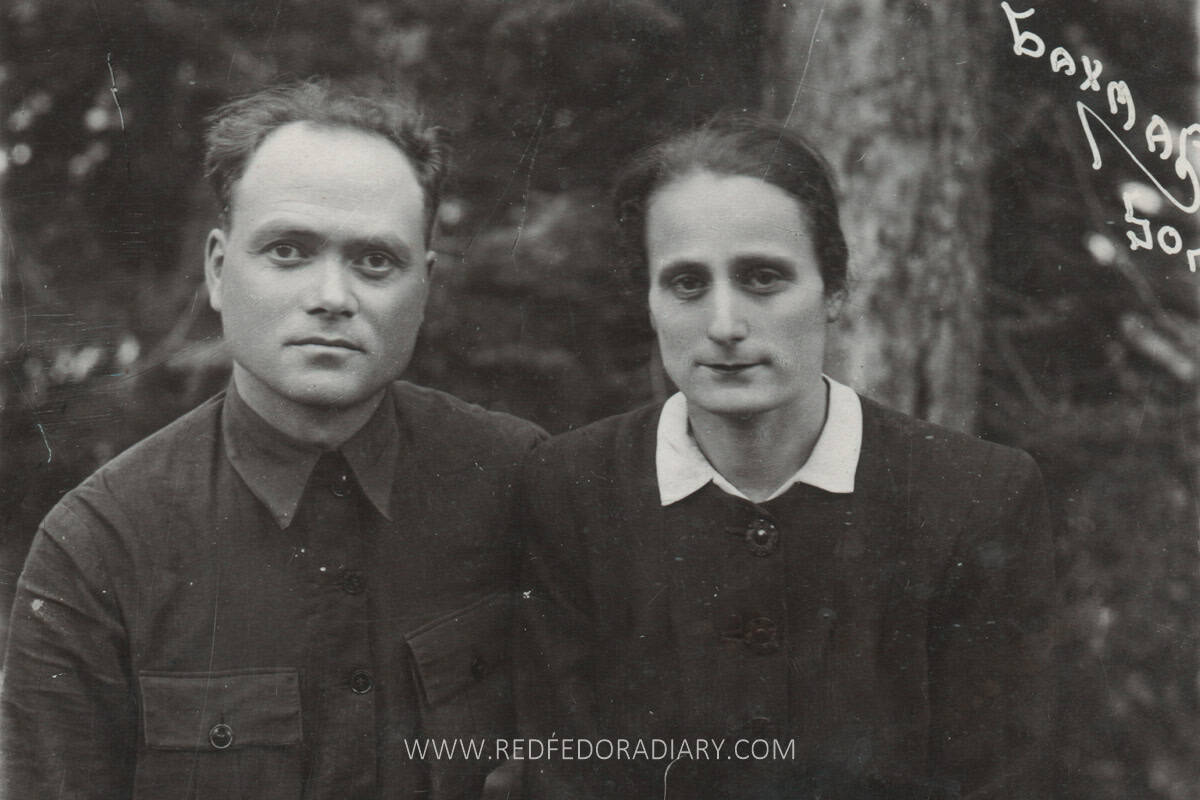
My grandpa, Valiko, was the son of a farmer, and my grandma, Nina, was the daughter of the village Bukistsikhe’s noblemen. As you might imagine, Nina’s parents were against the marriage, so they eloped to Bakhmaro resort, just 50 km from our village.
Nina worked as a kindergarten teacher and sometimes also as a midwife. Valiko was a professional engineer, self-taught artist, and craftsman known throughout the Chokhatauri municipality. He built the house we currently have in Bukistsikhe.
During the Soviet era, he received commissions to hand-paint commercial billboards and portraits of Soviet leaders. Sadly, none of those paintings remain, as I’d love to have one!
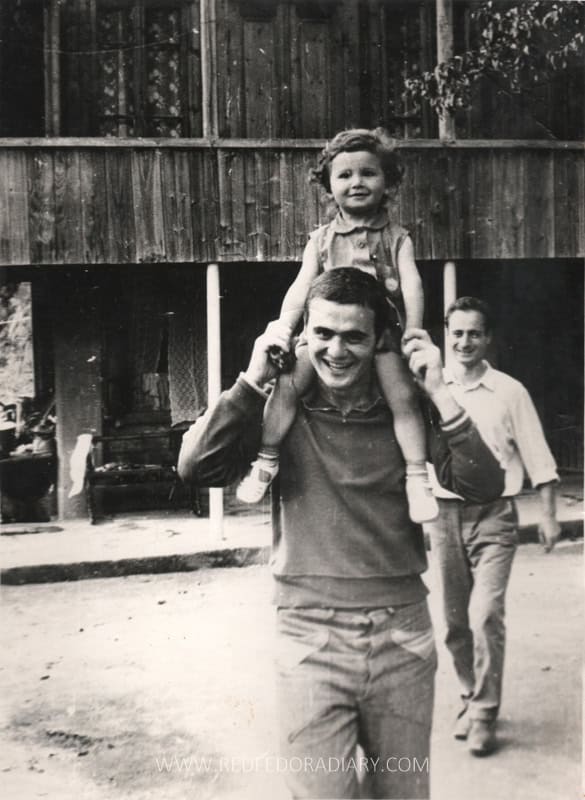
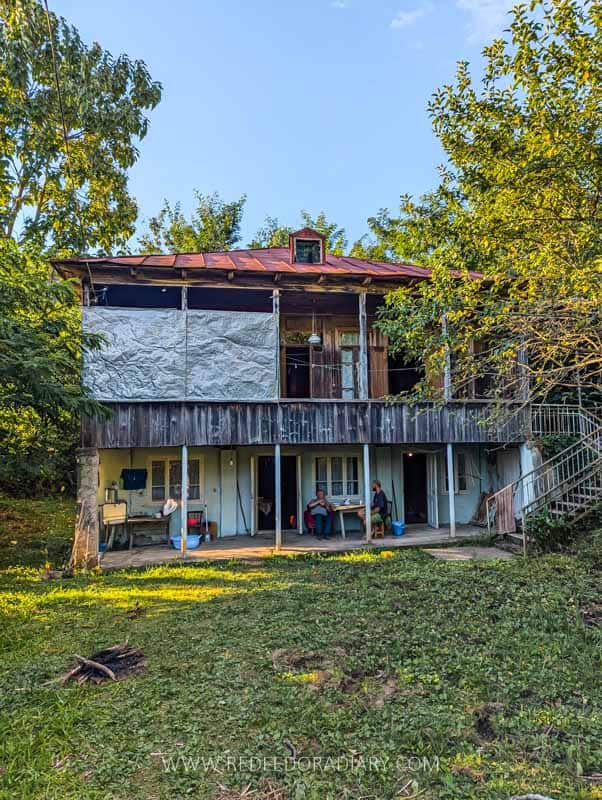
Valiko also fought in WWII and returned after two years due to an injury. They had four children, but one died very young, and we don’t even have a picture of him.
My grandpa was the sweetest and most caring person for everyone, and each of us, the seven grandkids, loved him dearly. Even though he had health issues and Parkinson’s, he’d craft toys for us out of wood when he knew we were coming to Bukistsikhe or fix our toys and various items overnight before we woke up.
He passed away in 1999 when I was 12 years old. Nina lived longer, and she even met six of her great-grandkids.
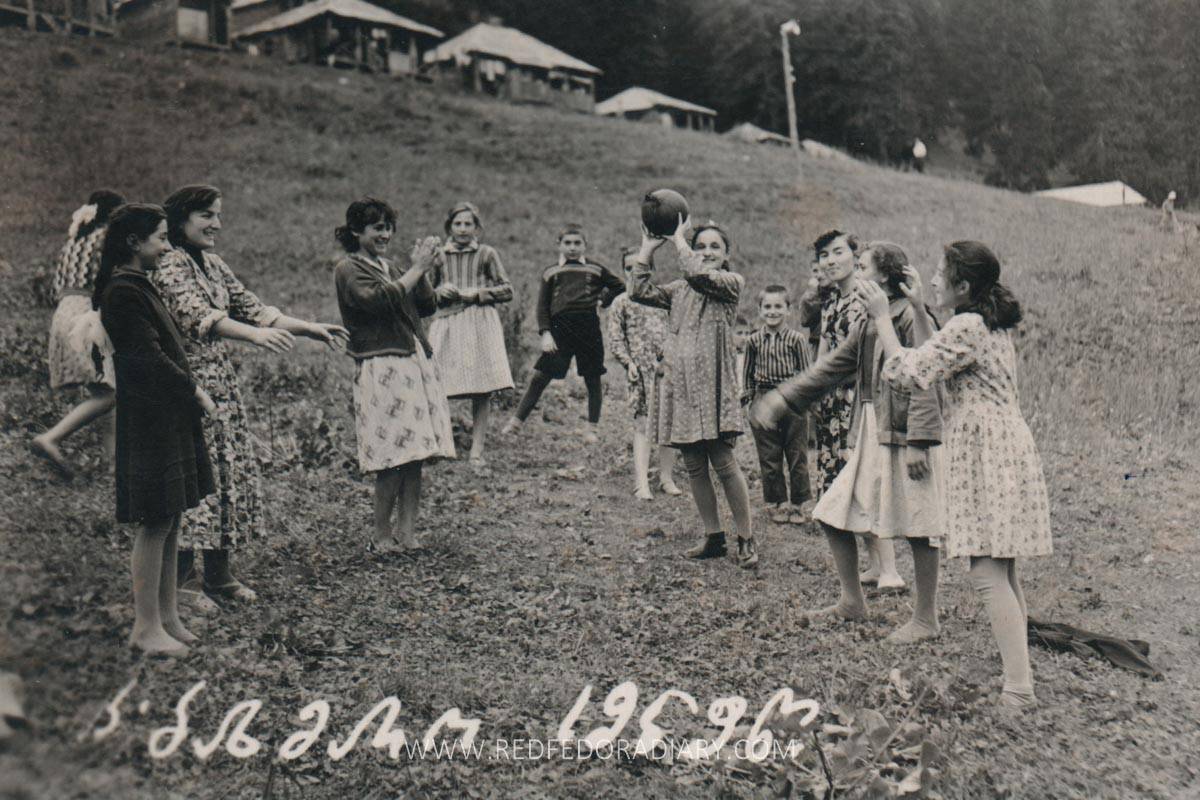
Bakhmaro resort, located only 50km away from our village, was their summer getaway, and we even had a house there once (we lost it, sadly). Therefore, most of the pictures I share here are taken in Bakhmaro.
As a side note, it was customary back then to write the date and location directly on the photos, mainly in Russian, but a few of my family archival photos also have Georgian script on them.
Chokhatauri travel tips
This section provides some essential travel tips for Chokhatauri. To make this post more compact, click on each title to expand and reveal the text.
Things to do in Chokhatauri map
For a more comfortable way of exploring the city, here is the Google Maps list of all the things to do in Chokhatauri for you to save and use whenever you need it. If you download the area for offline use, you will not need the data to access the spots
15 things to do in Chokhatauri – Guria’s less-traveled area
Since the town has few tourist attractions, this guide lists things to do in Chokhatauri, including cultural and historical places within the municipality’s borders, starting with the city and moving beyond.
Learn about Chokhatauri in its regional museum
The Niko Berdzenishvili Museum of Local Lore, located in the center of Cholkhatauri town, exhibits regional items and cultural artifacts. Founded in 1958, the museum displays archeological, ethnographic, geological, mineralogical, numismatic, and manuscript materials uncovered during various archaeological excavations and expeditions.
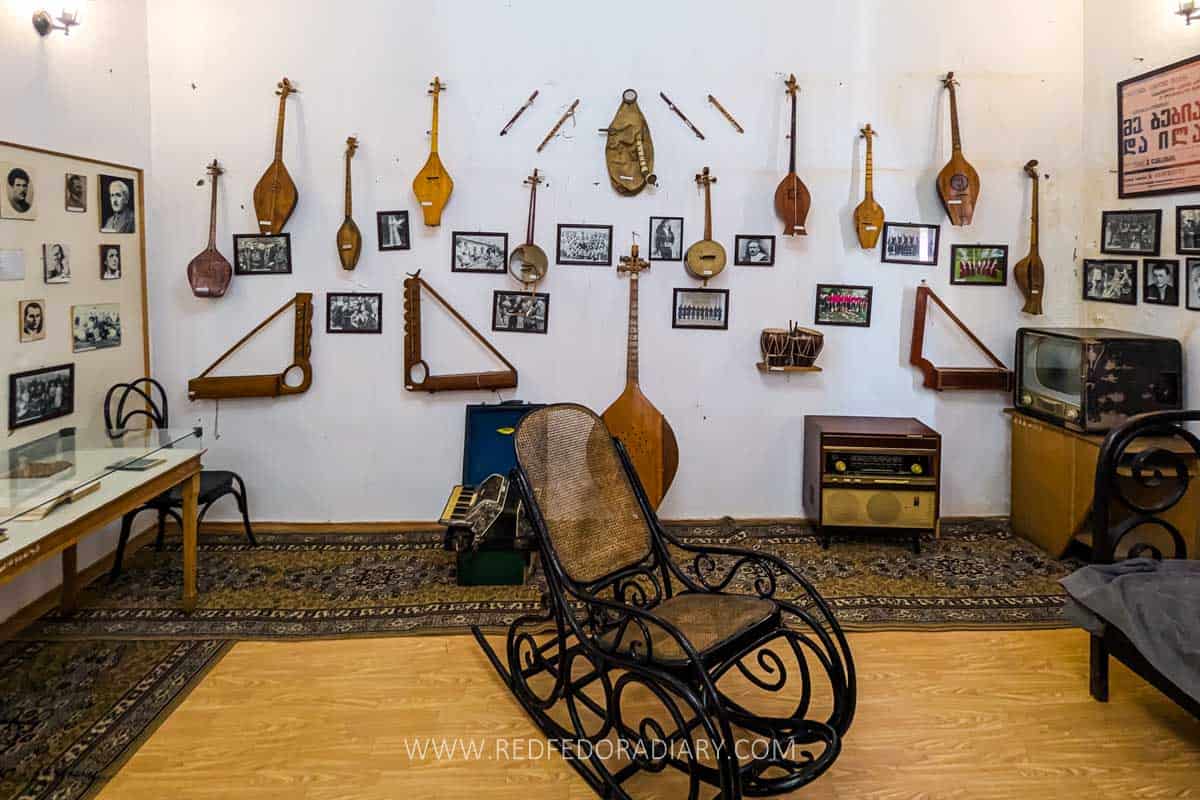
Here, you can find combat and labor tools of 5-7the centuries BC, relics of the cemetery of the archaic period, beads made of different materials, bracelets, parts of a shark, earrings, pottery, coins from various countries, including 17th-century silver currencies of Polish King Zygmunt III Waza and 16th century Colonial Spain, which I haven’t seen in such small regional museums.
Additionally, the museum showcases a vast collection of weaponry, Georgian folk instruments, and Gurian Dukes’ personal items. I particularly loved the 19th-century Polypon in surprisingly good shape and played The Blue Danube Waltz by Johann Strauss II, composed in 1866. The museum even has 14 more discs for it. There’s also a tiny Soviet occupation room and a fine art gallery.
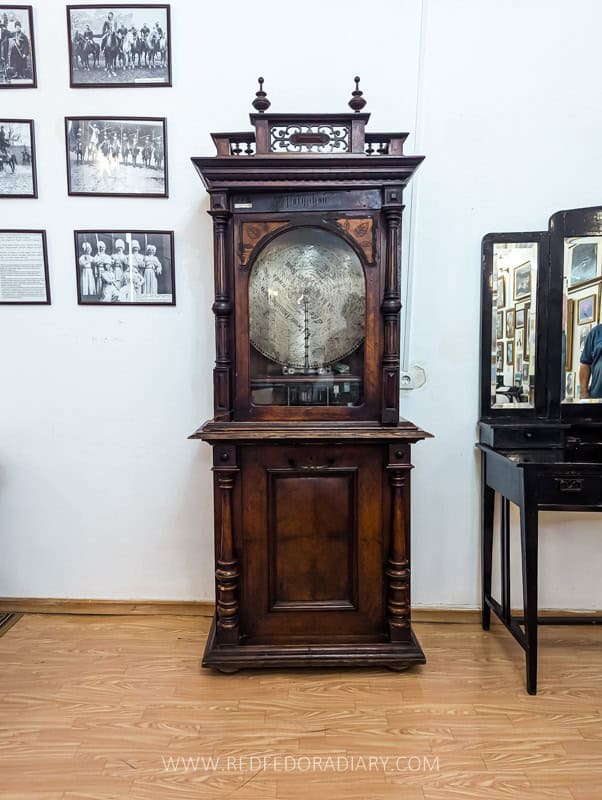
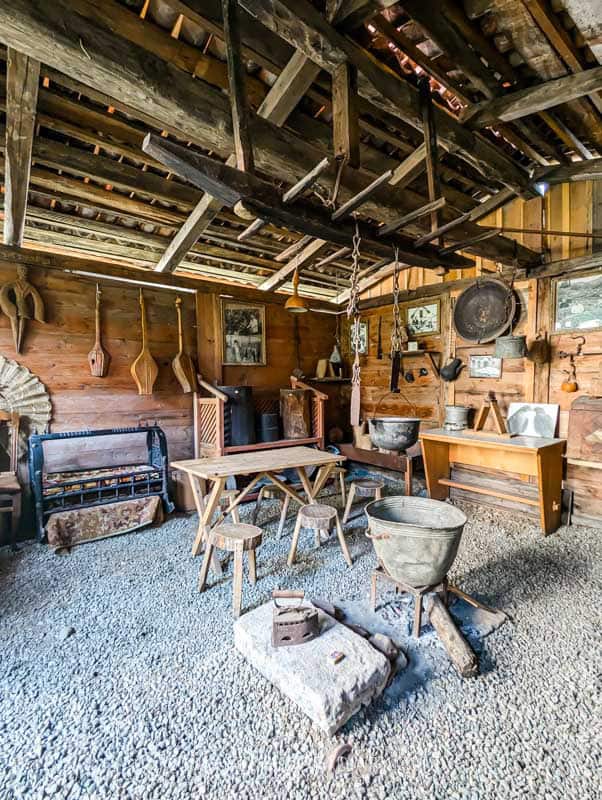
In the courtyard, the museum has a tiny Gurian house with more ethnographic items to showcase the traditional living conditions of local families centuries ago. Before Guria started to build Oda houses (square-shaped houses with 3-6 rooms made from timber, had a terrace, and stood on stone or short wooden columns), locals lived in one tiny house where the center had a firepit. However, unlike Meskhetian houses, they didn’t have an open roof for the fume; instead, they used it to smoke produce, particularly meat.
- Opening hours: Mon-Fri from 9:30 am to 6 pm; Sat-Sun from 11 am to 4 pm.
- Entrance fee: adults – 2 GEL.
Buy local product at Sunday farmer’s market
Unlike Ozurgeti, for instance, the farmers market in Chokhatauri happens only once a week – on Sundays, making it a unique experience. Such pop-up markets are typical for smaller towns where locals from nearby villages come to trade and sell.
Regardless of the season, you can find all the local produce, from fruits to veggies, spices to loose-leaf tea, tobacco, homemade cheese, hazelnuts, cornflower for mchadi, honey (from acacia, chestnut, and linden), and much more. While this is not a surprise for me, there’s even livestock on sale, too.
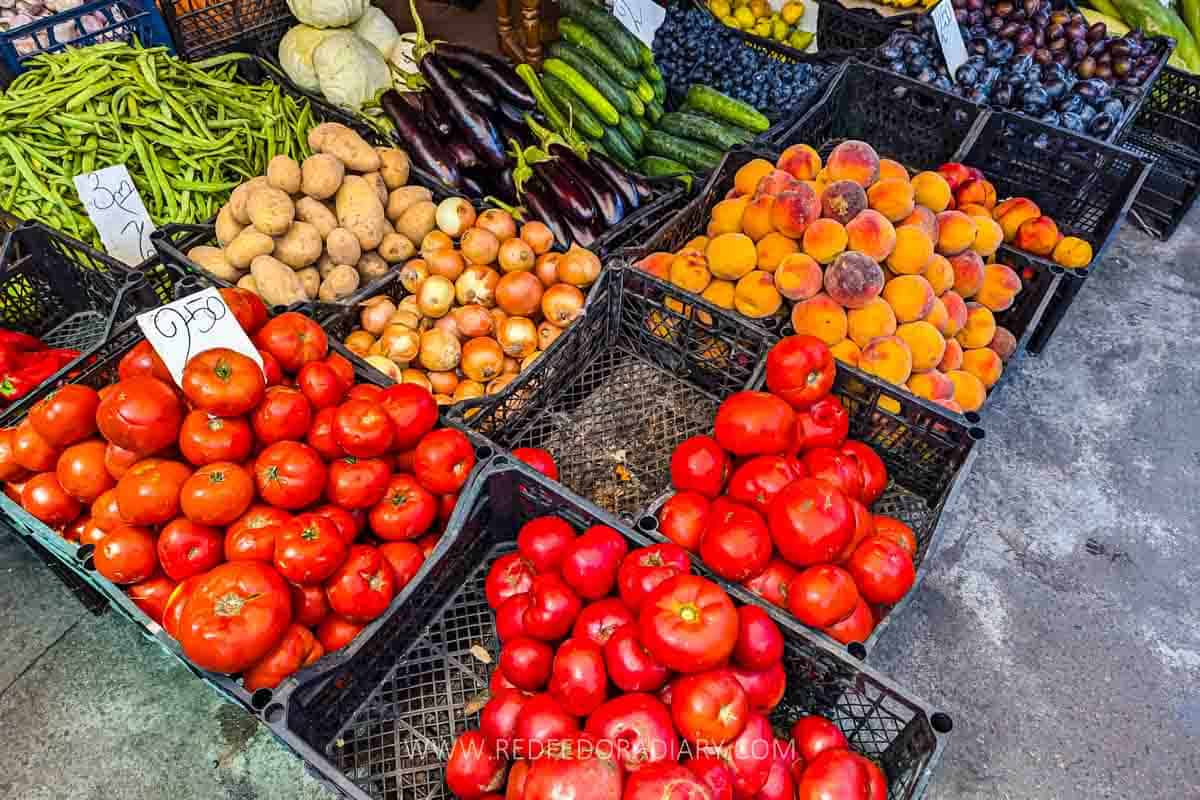
When spending our summer holidays in Bukitsikhe, we often went to the Chokhatauri Sunday market to stock up on groceries for the next week. If we needed a more extensive shopping spree for an event (for instance, my dad threw a huge Supra to my grandparents for their 50th wedding anniversary), we’d go to Samtredia, as the market over there used to be more well-known and have much more variety than found in Chokhatauri.
See the bas-relief near the market
Once at the market, or even if you can’t make it on Sunday, don’t miss the beautiful bas-relief decoration right in front of the bazaar. The exact location is on my Google Maps list.
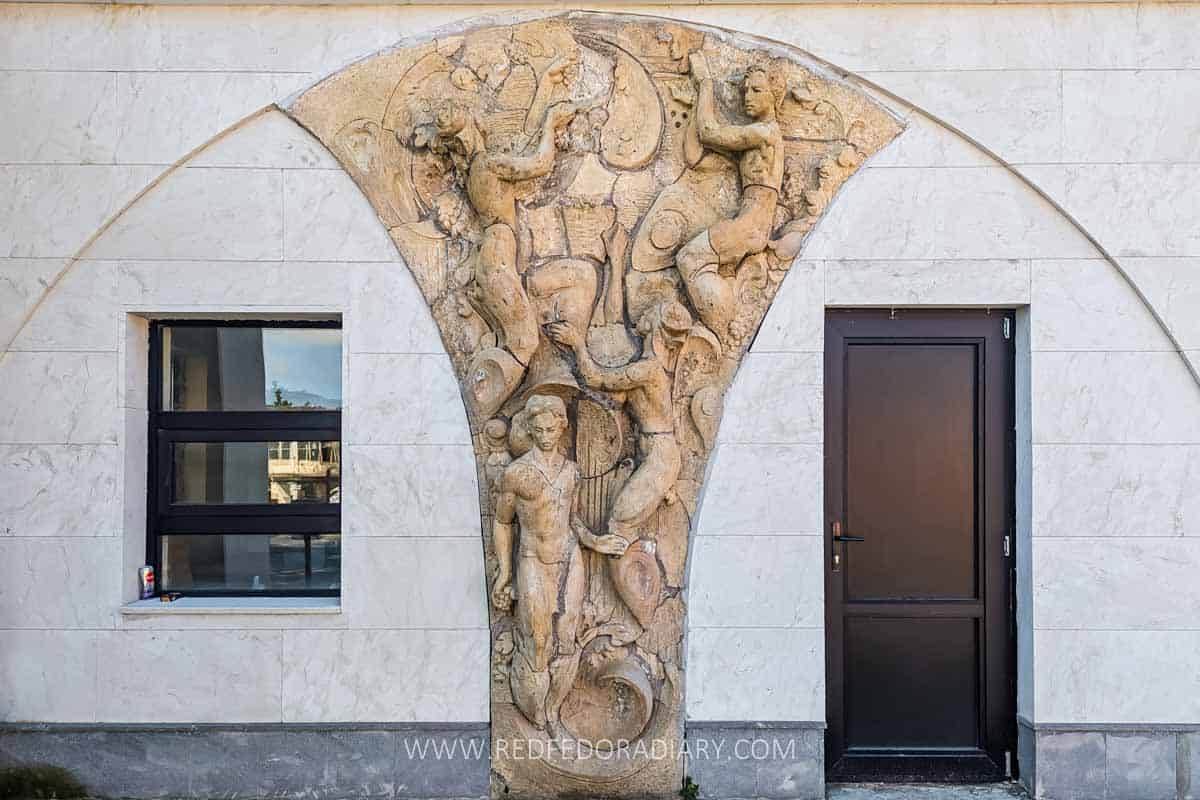
The bas-relief has two themes—one with males and grape vines and the second with females, with a more sophisticated design resembling waves or big leaves. Unfortunately, some details are missing, and it has big cracks, too.
Glance at the abandoned former ‘univermaghi’ building
In the Soviet era, ‘Univermaghi’ was a term for a shop that sold all sorts of things, similar to what we call a hypermarket today.
One such ‘univermaghi’ used to be located at the end of Chokhatauri town on the way to Bukitsikhe village. For some reason, I always found this building especially beautiful, and every time we made a turn on the road to our village, I was excited to glance at it. And as much as I hate transpassing on someone’s property, I never stopped the car until this year.
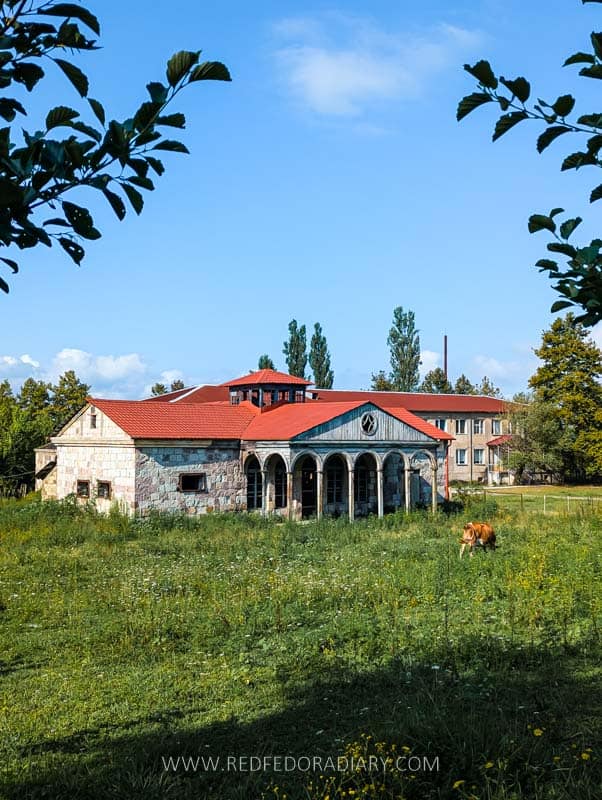
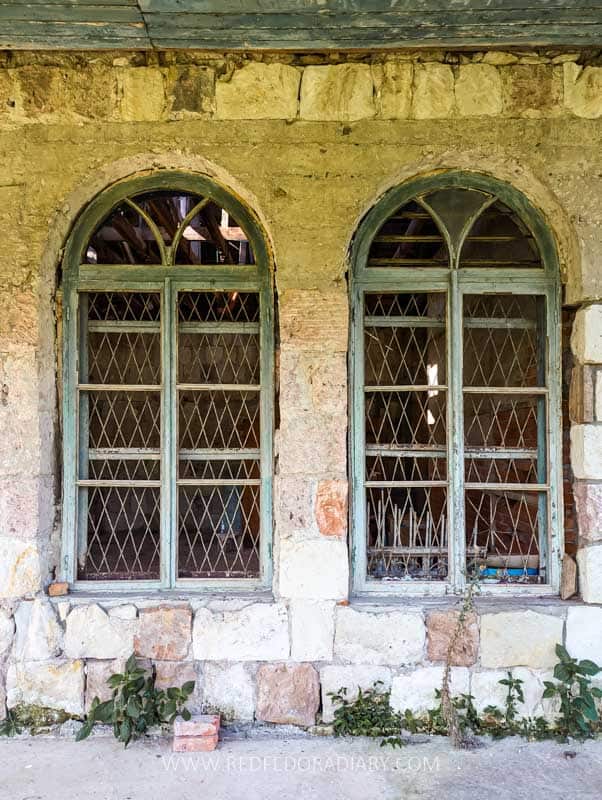
As far as I remember, it has been abandoned, but my dad said it was part of the tea factory. It had everything a family would need, including groceries, clothes, household items, etc.
Half of the building seems renovated; at least some work had been done a few years back, while another half is in ruins, and the roof on that side is partially demolished.
The renovated part stores vintage wooden cupboards, auditorium chairs, door frames, and other items. The semi-circular faded green windows and doors are particularly charming, and I believe it would be a fantastic restaurant space, similar to the Bahnhof Station in Asureti.
Dip in the Guris Tba in Bukitsikhe
Guris Tba, or Gurian Lake, is the local name for a small section of the Supsa River. The river forms a small pond with a slow flow under the bridge and serves as a natural border between Bukitsikhe and Ianeuli villages.
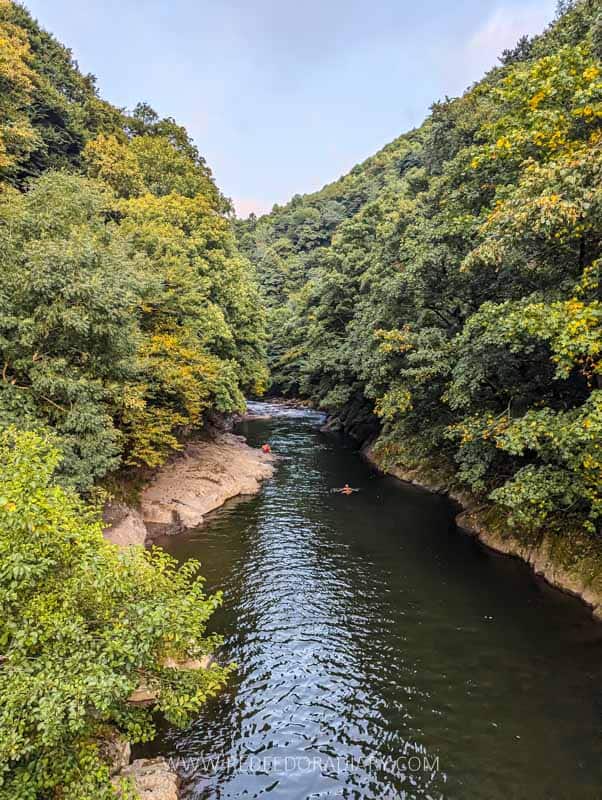
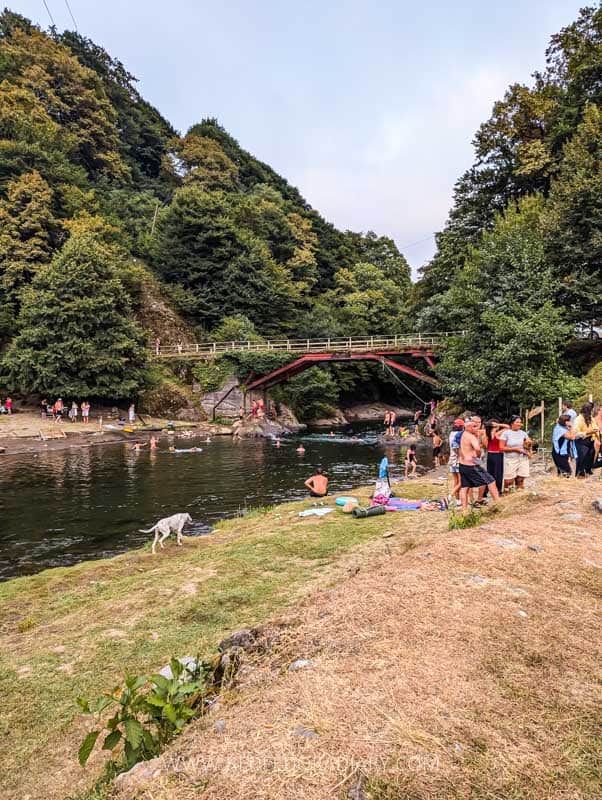
Guris Tba has always been a go-to spot for youngsters and children of nearby villages to cool down on hot summer days. Even today, kids spend the whole day here playing volleyball, swimming, and socializing.
During my childhood, the volume of the river was higher, and boys would compete in jumping off the bridge.
There is a small convenience shop, a bar serving hot dogs and pizzas, and even a guesthouse, Guristba, where you can spend the night.
Hike to Tamari Fortress in Bukistsikhe
I take it for granted, but my village has been the region’s cradle since the Bronze Age, while the urban settlements formed in the antique period. Several artifacts found in Bukistiskhe archeological sights can be seen at Chokhatauri Local Lore Museum.
Bukistsikhe Castle, also called Tamar’s Castle after King Tamar, is located on a steep hill accessed via a trail starting at Guris Tba. It has several construction layers from the early to late Middle Ages.
In 1774, the Turks captured Bukistsikhe, along with Likhauri and Askana castles. Mamia IV Gurieli, the Prince of Guria, and Solomon I, the King of Imereti, recaptured it in the same year. However, in the end, Solomon I ordered the castle’s destruction to force the principality of Guria to subordinate to the kingdom of Imereti.
The castle used to control the road leading to the Black Sea from Imereti and Meskheti (current Samtskhe-Javakheti) before Guria became part of the Russian Empire.
Today, the monument is severely damaged and almost covered in greenery. Only the northeastern part of the castle remains. The archeologists uncovered remnants of a stone press and a stone staircase on the north side of the multi-store building. They believe the second floor should be residential and the third floor for combat.
The castle dates to the 6th and 7th centuries. In the 10th century, a church was built east of the castle, but only the northern and eastern walls survived.
Try Gurian unique wines at Sharashidze Winery in Bukistsikhe
During the Soviet times, the local government divided the agricultural fields by region, making Kakheti the prime winemaking area in Georgia.
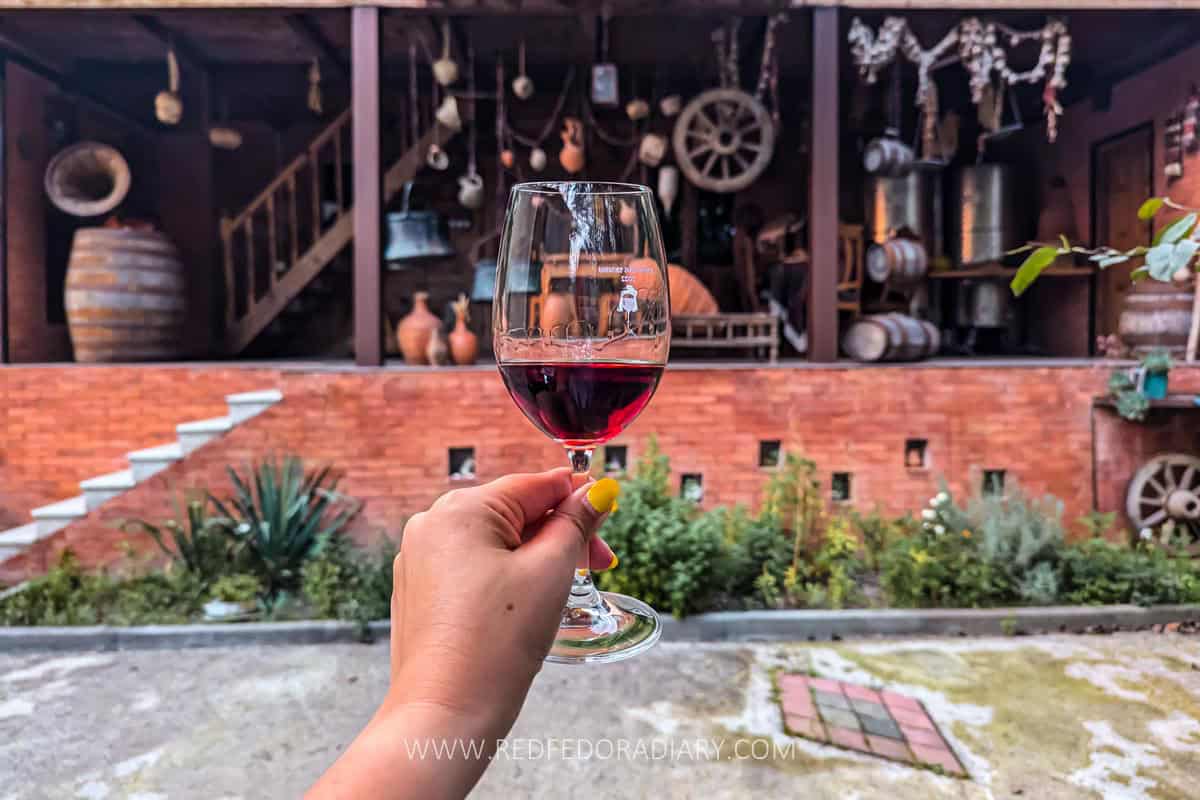
While winemaking in Guria was not entirely erased, some of its native vines did get lost. Luckily, Teimuraz Sharashidze has salvaged a few vines and now makes unique Gurian wines in his family winery. Therefore, booking a Gurian wine tasting is one of the best things to do in Chokhatauri.
Vineyards in Guria are mainly planted in river valleys and on slopes. Hybrid vine varieties Isabella (a.k.a Adesa) and Noa are most common in the region. Georgian varieties, such as Tsolikouri and Guria’s proud grape Chkhaveri, harvested very late, usually in November and sometimes even in December, are also quite common. The best Chkhaveri comes from the villages of Chokhatauri municipality and several villages of Ozurgeti municipality.
Apart from Chkhaveri, Jani (my personal favorite) and Mtevandidi are full-bodied, dark-colored red wines produced in Askana and Bakhvi micro-zones.
Teimuraz has about 35 grape varieties in his vineyard, 22 of which are Gurian and the rest from Abkhazia and Samegrelo, and makes 15 to 18 individual Gurian wines.
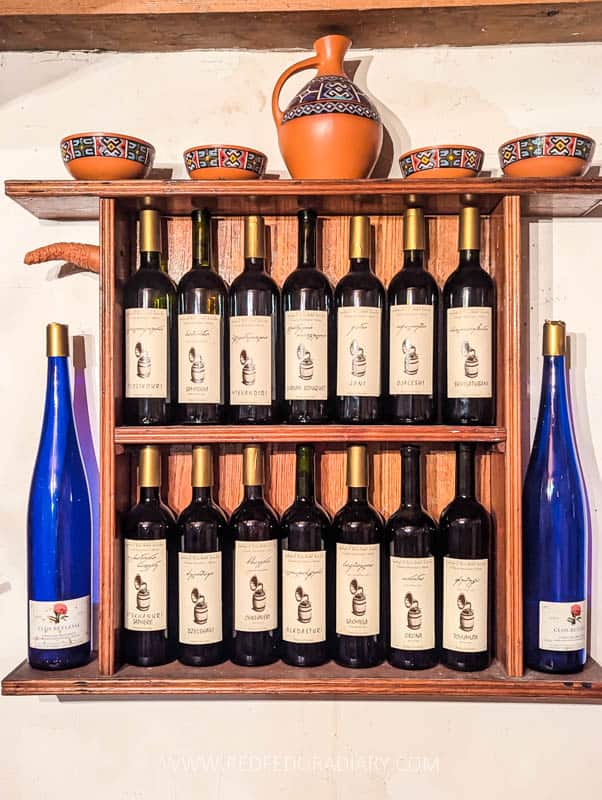
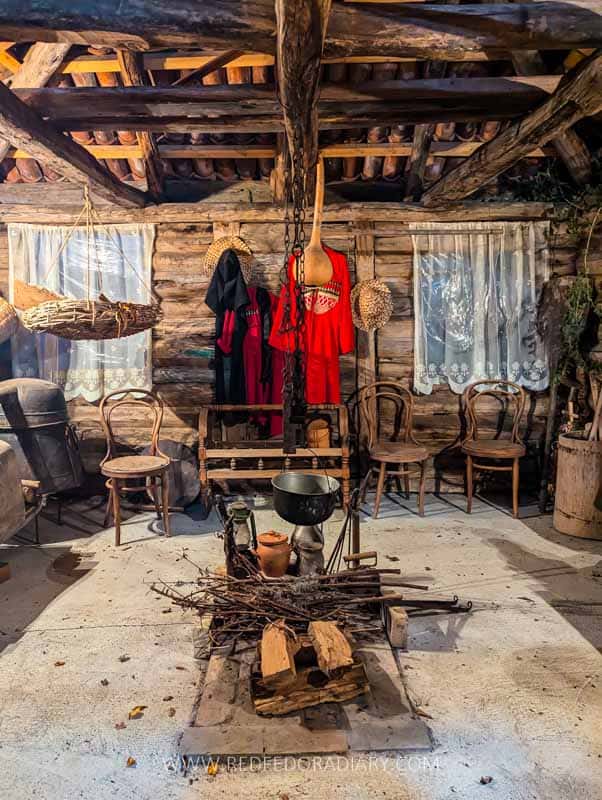
At Sharashidze’s Winery, you can try Chkhaveri, Jani, Tsolikauri, Mtevandidi, Skhilatubani, Samarkhi, Tchumuta, and Sakmelia, to name a few. He also makes his own Gurian Bouquet, a mix of various grape varieties, which, as he tells me, sells out the most.
The wine-tasting price depends on which wines you want to try. You can take the leftover wines with you if you’re in a small group. The wine tasting also includes a platter of appetizers or a homemade lunch prepared by his wife, Ketino, renowned for her cooking skills and tasty food in the entire village.
Teimuraz sells his wines at Dadi Wine and 8000 Vintages wine bar and shop in Tbilisi and at Midi Wine bar in Batumi.
Attend the Bakhmaro Horse Race
Bakhmaro Doghi, or the horse race, is an annual tradition that has been part of Gurian culture for almost a century.
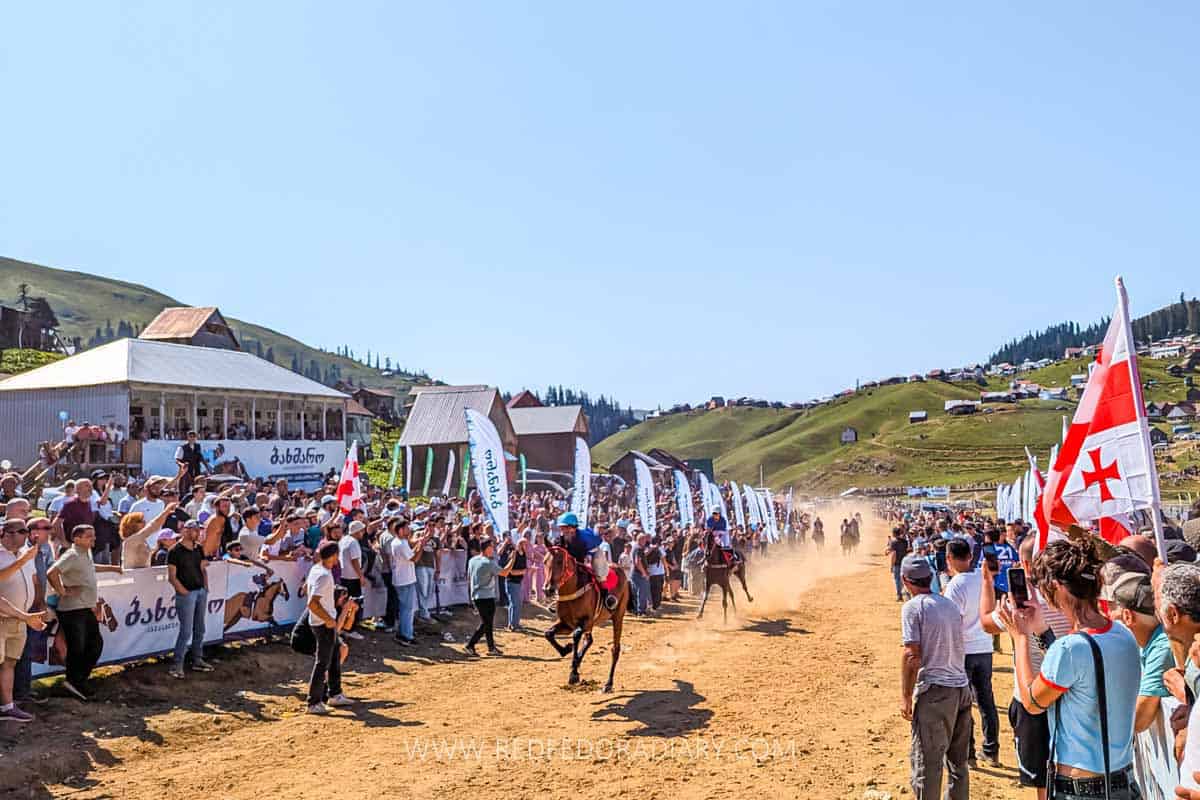
Every year, on August 19th, the day of the Transfiguration of Jesus, the entire Chokhatauri municipality and nearby areas gather in the mountain resort Bakhmaro to watch the country’s best jockeys compete on the most challenging terrain and win the cup.
Gurians are notorious for reckless horse riding, which got them into European and American Buffalo Bill’s Wild West shows in 1892 for almost 30 years.
The Bakhmaro Doghi is held in the bed of the Bakhviskali River in an open space on stony terrain. The track is circular and follows both river banks, and riders have to cross it several times depending on the category they are competing in.

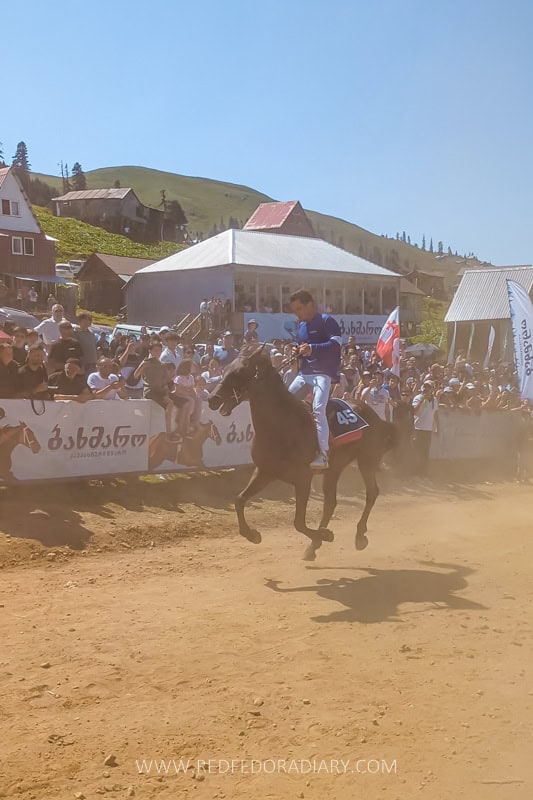
It was the most chaotic and unsafe event I have ever attended in Georgia. Unlike Lelo Burti, the fierce ball game in Guria’s Lanchkhuti municipality, Bakhmaro Doghi, raised my stress and anxiety. Read my detailed tips for attending the Bakhmaro Horse Race.
Enjoy the most breathtaking sunset or sunrise above the clouds in Bakhmaro
The mountain resort of Bakhmaro lies at 2050 meters above sea level, nestled in a valley, unlike Ozurgeti’s Gomismta, a similar mountain in the Guria region.
What differentiates Bakhmaro from others is that sea air mixes with mountain air, making it unique in treating various health issues, especially respiratory illnesses, hemorrhage, tuberculosis, and neurasthenia. Locals believe that it takes 21 days for a person to feel full therapeutic effects.
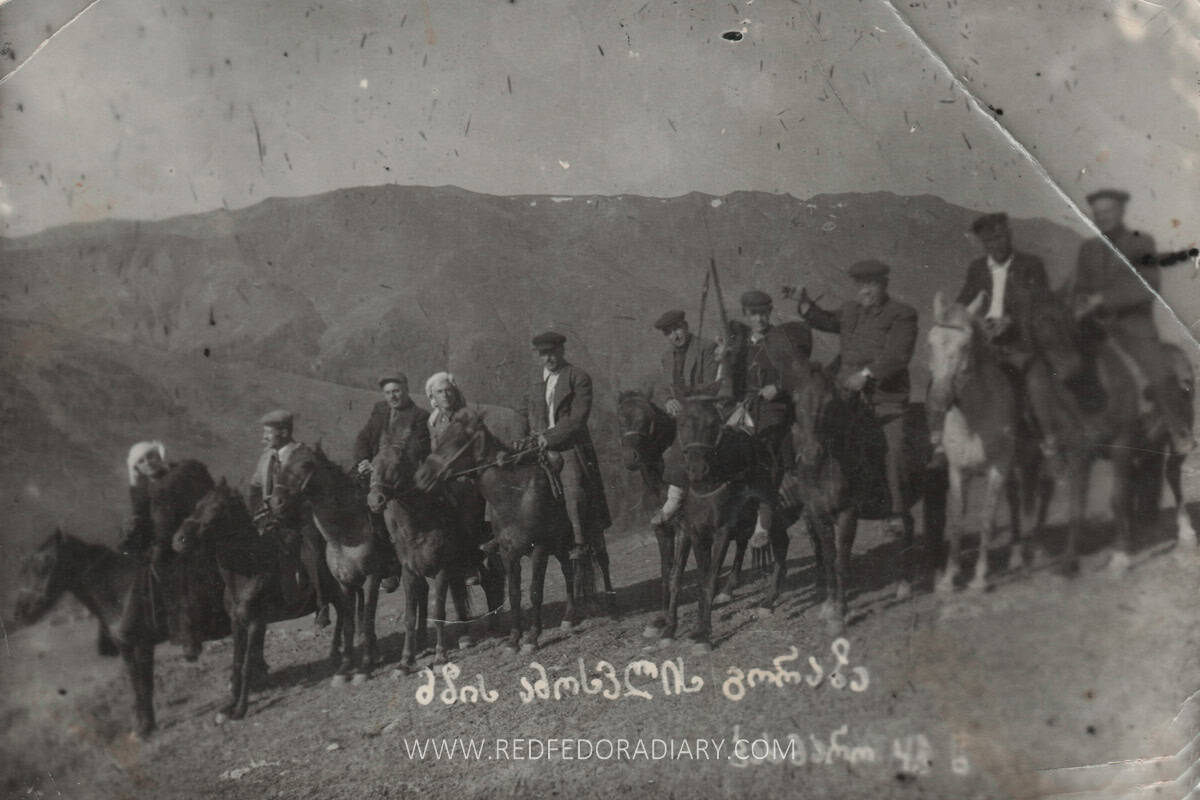
When my brother was a toddler, he had Bronchitis and high fevers, but after my mom took him to Bakhmaro, the fever immediately dropped the next day, and he recovered in just a few days.
Wooden cottages dotted on the slopes of Bakhmaro make it a picturesque village. However, the main appeal is its sunset and sunrise mountains, which locals call gora (the hill).
Sunset Mountain, at about 2200 meters above sea level, is easily reached from the Bakhmaro’s center from the wooden church. It takes around an hour to hike 2 km or take a car to a certain point until the end of the road and then continue the walk. Schedule your arrival to the viewpoint around 1:30-2 hrs before sunset to enjoy the view and the sea of clouds as the sun sets below them. However, do note that the scenery highly depends on the weather.
If you are staying in Bakhmaro, I highly recommend hiking to Sunrise Mountain—Gadrekili, too. You’d need to start the hike in the middle of the night, maybe around 2 am. It takes three hours to hike to the viewpoint from the same wooden church, but if you have a car, you can drive to the end of the road and then hike to shorten the walking time.
I recommend downloading Mapy.cz and navigating yourself with the map. Here is the pin for Sunset Mountain, and here’s for Sunrise Mountain.
How to get to Bakhmaro
Bakhmaro is 50 km from Chokhatauri town and takes around 2 hours. The road is fully asphalted, fresh, smooth, and wide enough compared to many other mountain roads in Georgia. After dark, the reflective panels and street lights make it easy to navigate.
The road is steep and constantly inclined, and many cars’ engines tend to overheat. We saw at least a dozen cars stopped on the side of the road. For the main road, you certainly don’t need the 4WD to get from Chokhatauri to Bakhmaro, and the sedan will do just fine. We drove with a Nissan Tida. However, the road inside the village is dirt off-road; therefore, if you plan on driving to the sunset or sunrise mountains, it’s better to have the 4WD car.
Public transport, or marshrutka vans, runs from June to September, the season in Bakhmaro. Chokhatauri, Ozurgeti, and Batumi have direct marshrutkas heading to Bakhmaro.
Chokhatauri to Bakhmaro marshrutka departs from the bus station in front of Socar gas station (pin is available in my Google Maps list) at 10 am, 12:20 pm, 2:30 pm, and 4 pm during the season. The schedule becomes relatively scarce as the season ends. The price is 10 GEL per person. Unfortunately, I don’t have a schedule for Bakhmaro to Chokhatauri, but I am sure the driver will be able to give you an answer.
Ozurgeti to Bakhmaro van runs once a day at 12 pm from Ozurgeti Central Bus Station. It costs 15 GEL per person and takes around 2:30 hours to reach Bakhmaro. On the way back to Ozurgeti, it departs at 4 pm.
Batumi to Bakhmaro marshrutka also runs once a day from Central Bus Station at 7:30 am and returns to Batumi at 1:30 pm. The journey takes around 3-3:30 hours, and the ticket costs 25 GEL. Arrive at least 30 minutes earlier to secure your spot.
Marshrutkas from Tbilisi to Bakhmaro are almost always full, as they run every other day in summer. I’d recommend going to the Didube Bus Station and getting the details or asking your accommodation to help you. Otherwise, you can take a marshrutka to a nearby town and change it as described above.
I recommend booking a taxi with GoTrip.com if you prefer a private transfer. Drivers are available from all the country’s main cities, including Tbilisi (see prices), Kutaisi (see prices), and Batumi (see prices). The price depends on the distance and the car type; thus, it starts from 350 GEL for Tbilisi and 220 GEL for Batumi.
You can book a one-way transfer too, and the driver will wait for you and bring you back. The prices shown on the website are final and won’t change. Moreover, you can make as many sightseeing spots as you wish.
Taste Nabeghlavi spring water right from the source
When it comes to Georgian mineral waters, I prefer Nabeghlavi over Borjomi for a milder taste and bubbles. This has nothing to do with the fact that I am from Guria, and it’s the proud product of the region.
Nabeghlavi Resort is on the way to Bakhmaro, making it a great stopover and one of the things to do in Chokhatauri. Locals discovered the spring in 1905 after they noticed the cattle frequenting one particular spring.
As you pass the Nabeghlavi factory, you’d need to make a turn on your right and cross the bridge. The public spring (the exact pin is on my Google Maps list) is within the factory grounds but accessible to everyone. Named Borehole 2, the water comes from a 180-meter-deep hole drilled in 1988.
Like Borjomi natural water, Nabeghlavi from the source tastes different from the bottled and has a slightly metallic flavor.
Hunt down Soviet-era mosaics
Sadly, Chokhatauri Municipality doesn’t have as many Soviet mosaics as its neighbor Ozurgeti does. However, I still managed to find a few.
My top favorite is the only remaining bus stop mosaic on the way to Chokhatauri, which technically is not in Guria or within the municipality. Thus, I am still including it here because you’ll likely be driving on that road, and I don’t want you to miss it (find the pin in the Google Maps list).

The village of Chaisubani, translated as ‘tea district’ on the way to Bakhmaro, has one of the remarkably well-preserved mosaics on the former Culture House building.
The mosaic on the vivid blue background shows folk and agricultural themes the area is known for, such as tea, music, citrus, viticulture, corn, etc. But what surprised me the most is that it shows Lelo Burti, which I haven’t seen in any of the mosaics in Guria.
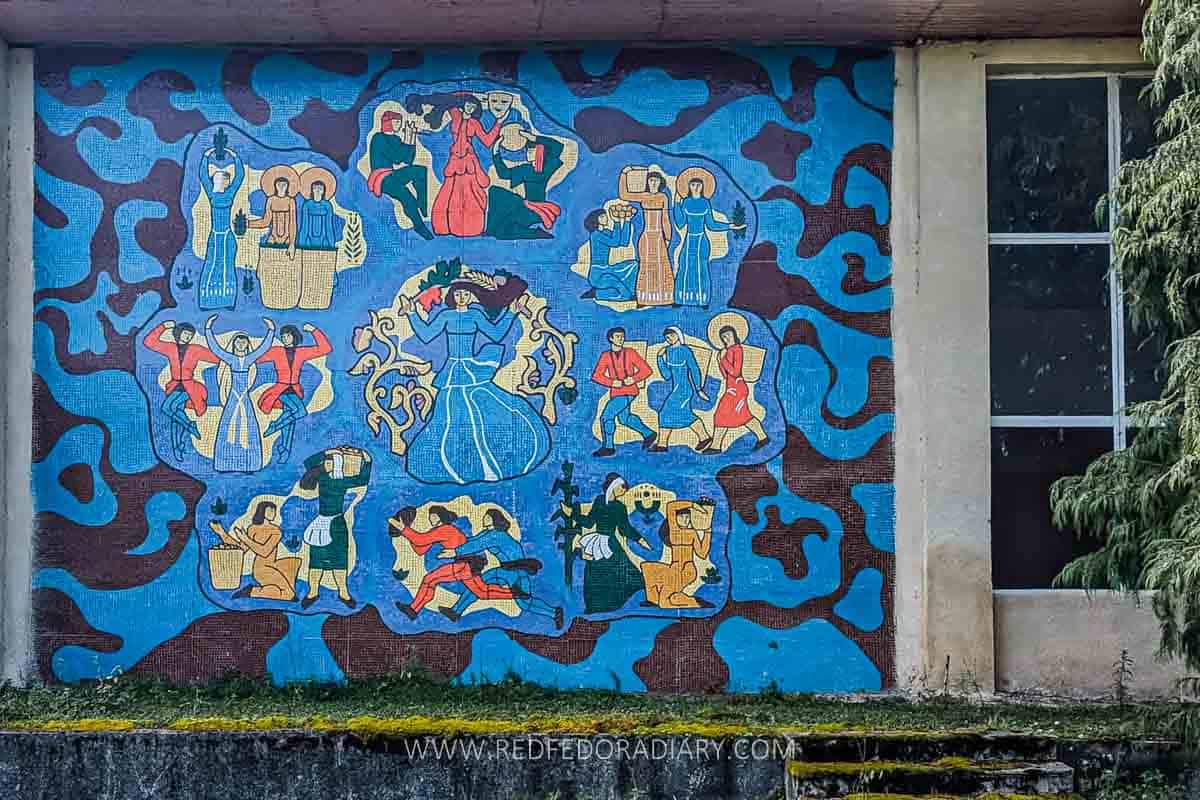
My father tells me that Chokhatauri once had a renowned and highly competitive Lelo Burti team. Some photos of the team members are on display at the Local Lore Museum in Chokhathauri.
Right in front of the Culture House, you’ll notice a newly built church on the grounds of the World War II memorial. This is another odd thing I’ve seen where a historical monument is incorporated into a religious place.
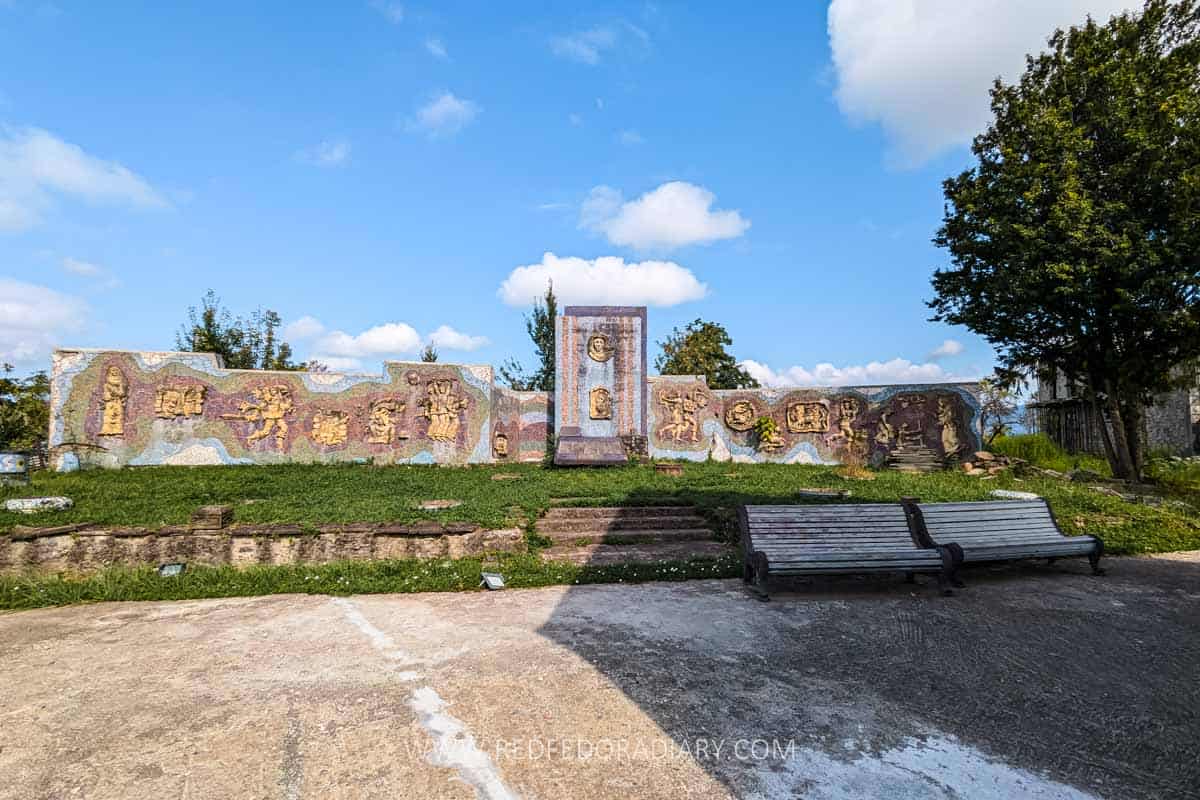
Luckily, the landmark is intact and features a fountain and entrance columns decorated in mosaics. The memorial itself also features bas-relief figures.
Peek inside the mosque at Chkhakoura village
This spot on the Bakhmaro Road requires a short turn off the main road. Unlike the neighboring Adjara region, Guria doesn’t have many mosques, making the Chkhakoura unique.
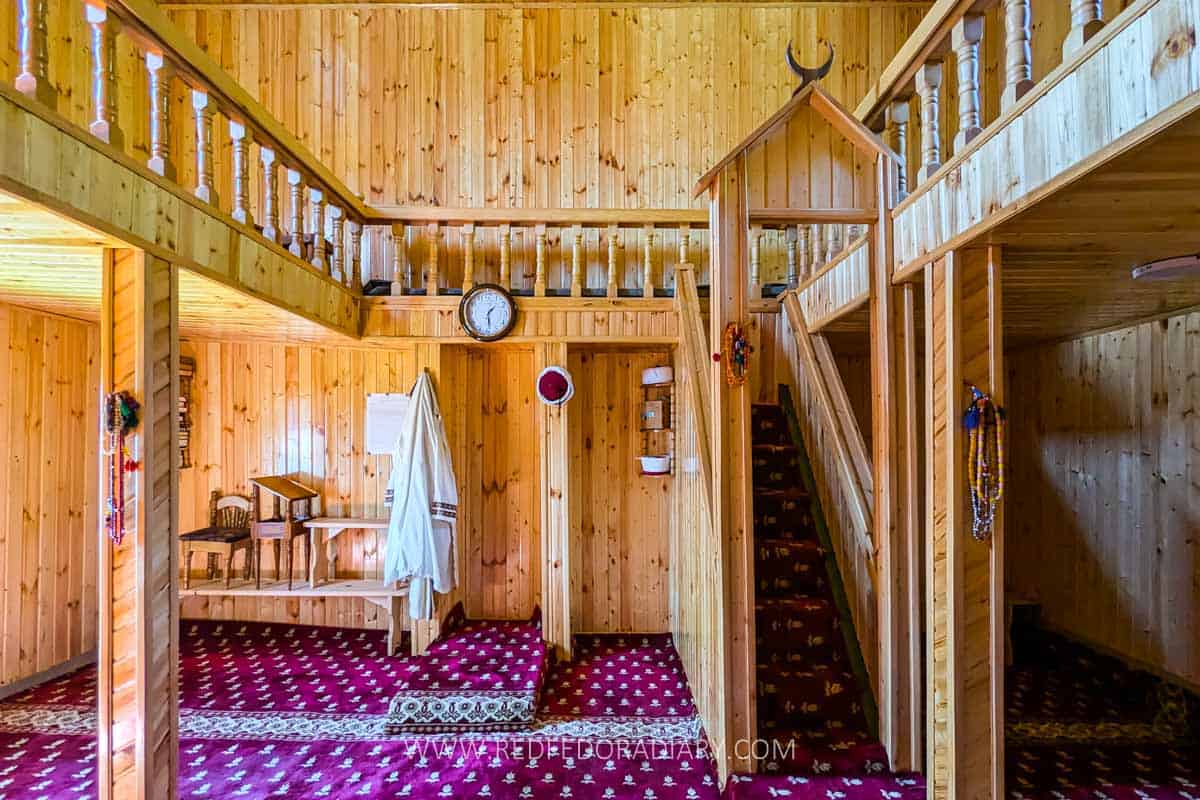
This small mosque was built in the 20th century when Adjarians moved here after the 1877-1878 Russia-Turkish war. In 1930, the government wanted to demolish the religious site, but the locals were against it. It is still an active mosque.
According to the photos on Google Maps, it was recently renovated and no longer has a colorful wood interior.
Visit the house-museum of Nikolai Marr in Dablatsikhe
Nikolai Marr was a historian, linguist, and scholar of the Caucasus at the beginning of the 20th century. His father, James Montague Marrn from Scotland, moved to the Caucasus in 1822 as a trader and later worked with the Gurieli family (rulers of the Guria) as a Horticulturist.
Nikolai, or Niko as we call him in short, studied Armenian and Georgian languages and their connection with other lingoes. He gained recognition with his Japhetic theory, proposing the common origin of Caucasian, Basque, and Semitic-Hamitic languages.
His house museum in Dablatsikhe displays his personal items, manuscripts he was working on, scientific works, pictures, documents, and books, to name a few. His relatives still live in the yard, care for the museum, and guide visitors through it.
Walk through the massive grounds of Eristavi Estate
Guria Eristavi Fortress-Hall in the village of Goraberezhouli is only 5 km from Chokhatauri town. The castle was built on a high hill in the 17-18 centuries, had a military purpose, and belonged to the nobility, also known as Eristavi in Georgian.
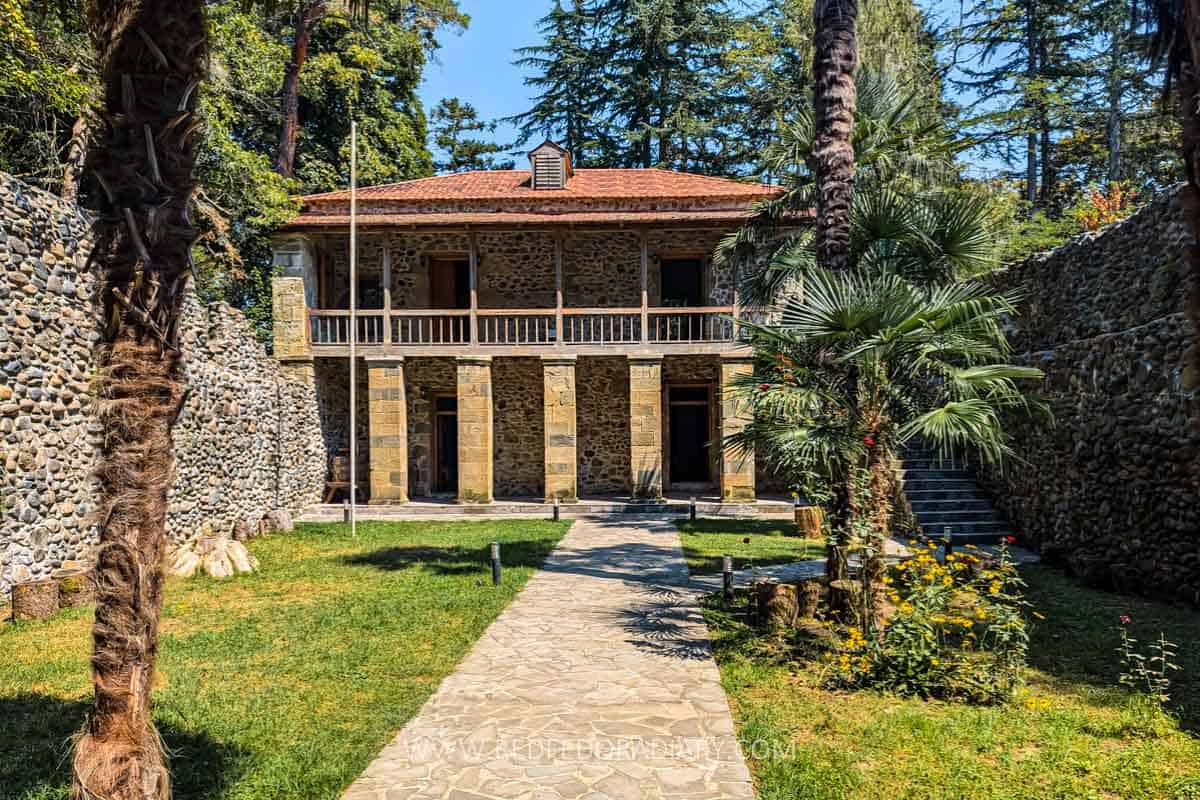
The word ‘eristavi’ consists of two words, ‘eri’ and tavi’, meaning ‘nation’ and ‘head,’ respectively. The word Eristavi is mostly used to describe a person’s status, but in this case, it became a surname of the Gurian nobility, whose original last name was Sharvashidze.
At the end of the 17th century, Mamia III Gurieli and Archil II fought with each other to gain rule over the Imereti region. The son-in-law of Mamia III, George Sharvashidze, was loyal to him, for which the prince gifted him the status of Eristavi, estates, and Erketi and Gormaghala churches.
The estate consists of a dendrological park and a house surrounded by castle-like, 5-meter-high, and 25-meter-long walls. The two-story home has two rooms on the ground floor and two on the upper floor.
The courtyard features an open-air wine cellar, which is quite unique for Georgian winemaking as we typically have a qvevri buried inside the basement.
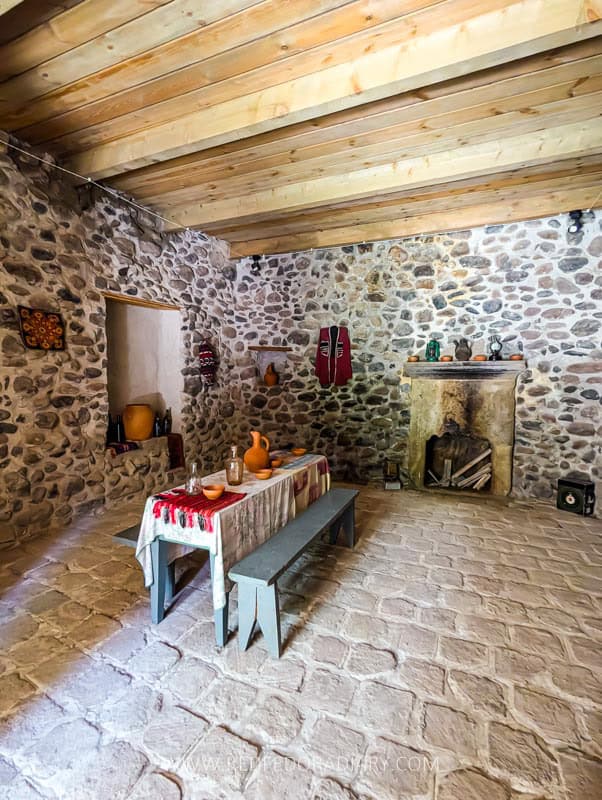
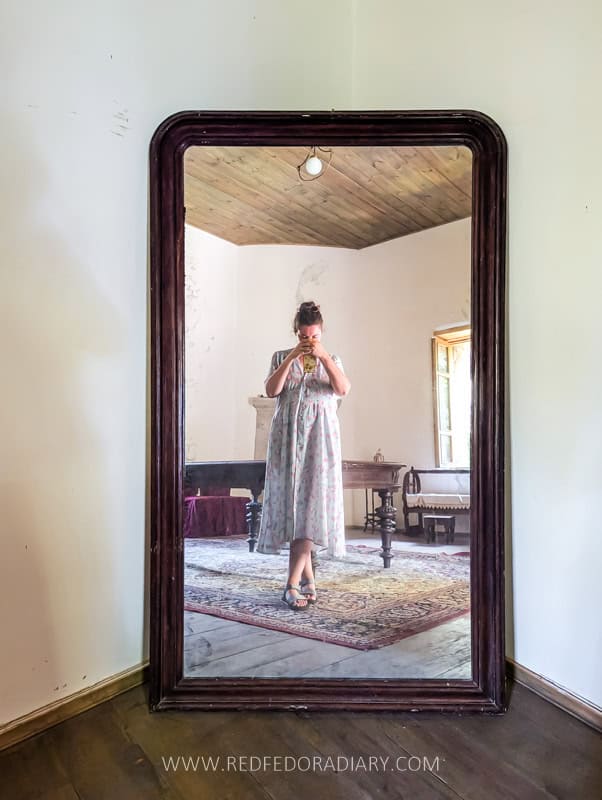
Some of the family’s original items are on display; the most iconic one is the massive wooden table with a checkerboard on it and one of the very few silver mirrors in the world, which shimmers as light falls on it.
On our visit, we were accompanied by a lovely Anna, who told us that one of the unique characteristics of the house is a heating system using the fireplace. It was engineered to circulate smoke within its walls instead of coming out through a chimney. This also prevented enemies from knowing if the Eristavis were at home.
The park around the castle has centuries-old plants such as oak, candy tree, giant sequoia, etc. The estate underwent massive renovations recently and is now open to the public.
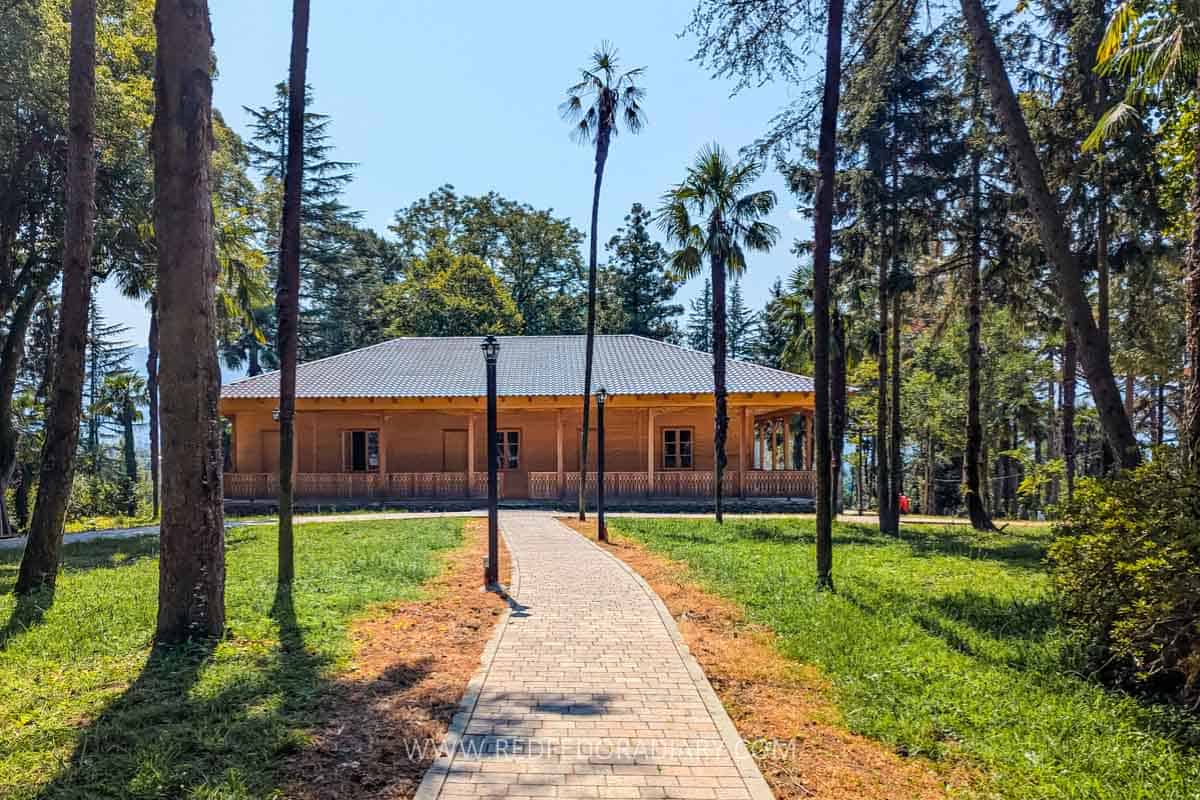
According to my father, the estate was turned into an Agricultural Technical College during the Soviet era, and a few concrete buildings were added then. These buildings are still there.
- Opening hours: every day from 10 am to 6 pm. You can stay in the park until late, as a security guard is always at the entrance gate.
- Entrance fee: FREE for the park. A visit to the castle is currently donation-based.
Stop by the house-museum of Nodar Dumbadze in Khidistavi
Nodar Dumbadze is probably one of the most beloved Georgian writers whose novels are simply hilarious and amazing.
His house museum opened in 1994 in front of his grandparents’ house in Khidistavi village, where he spent most of his childhood inspiring him to create such marvelous pieces based on Guria and local residents.
His Granny, Iliko, Illarion, and I (translated into many languages) are the most acclaimed and favorite works among many Georgians. His several novels, including Granny, Iliko, Ilarion, and I, were also made into movies.
The museum showcases his personal belongings, books, photos, and manuscripts.
The creation of Mziuri Park in Tbilisi to feature many activities for children was a vision of Dubmadze, who partially managed to make his dream come true. The statues you see inside the park are based on his characters.
Other things to do in Guria
Tour the capital of Guria
Ozurgeti, formerly known as Makharadze during the Soviet era, is a livelier town than Chokhatauri. It offers many accommodation options, beautiful murals, a regional museum, mosaics, and more.
Dive into the story of Georgian tea
Being one of the prime regions for tea production during the Soviet Union, Guria has a Tea Route, similar to the Wine Route across the country, where you can book a tea tasting, participate in the harvest, and see the whole process. Komli in the village of Tsitelmta and Bakhvi Tea Estate in the village of Bakhvi are two great spots to do so. Read my detailed Georgian tea guide to learn more about its turbulent history.
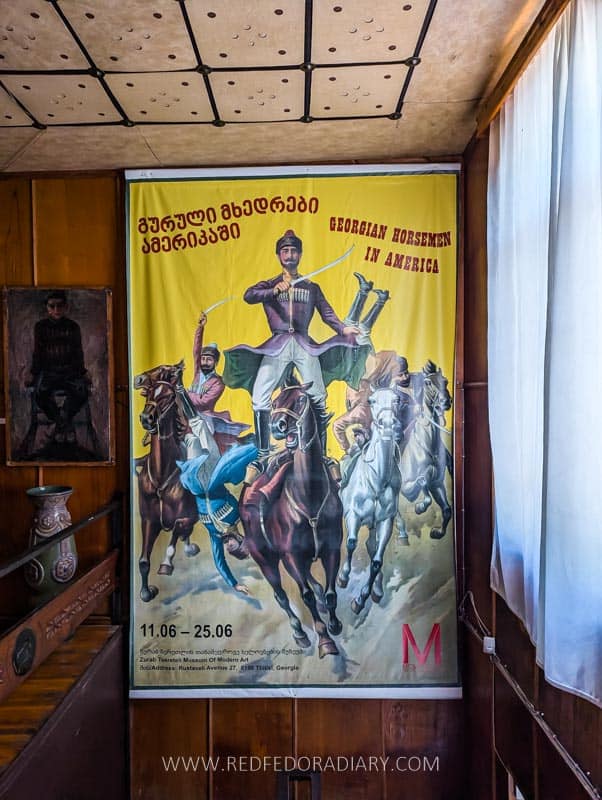
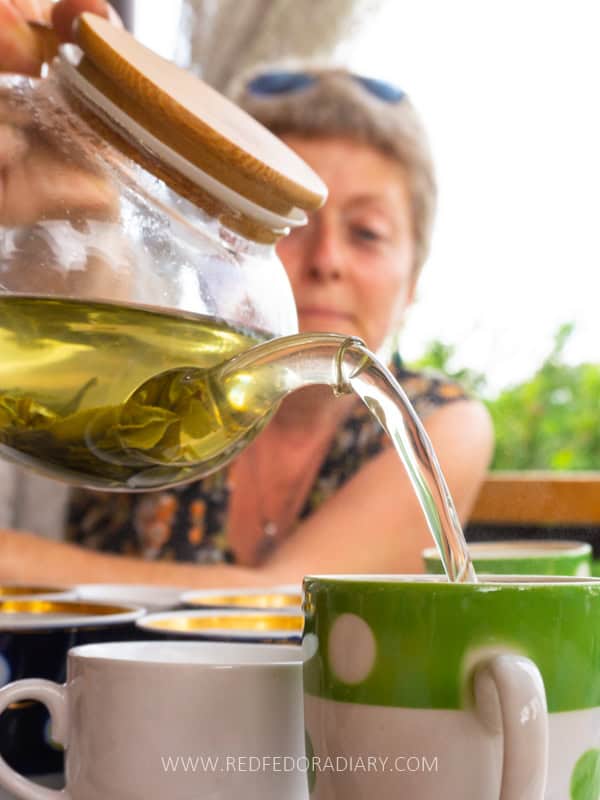
Show up for the most brutal ball game in Georgia
Lelo Burti, held on Easter Sunday each year, is a 300-year-old tradition and a brutal ball game held in the tiny village of Shukhuti in Lanchkhuti municipality.
Discover the story of world-famous Gurian horse riders
Among all the major city museums I have visited, Lanchkhuti has the best display and information about the famous Gurian horse riders who participated in Buffalo Bill’s Wild West Shows for almost 30 years since 1892.
Relax at the black sand beaches of the Black Sea
Part of the Guria region borders the Black Sea. The whole strip from Kobuleti to Poti has a magnetic shoreline compared to the pebbly ones in the neighboring Adjara region. Ureki, Shekvetili, and Grigoleti are the places you’d want to visit to experience black sand and a more tranquil environment.

Great guide! Just some annotations / corrections:
The Bus Stop in Khidistavi definitely deserves to be in the list of mosaiques: https://commons.wikimedia.org/wiki/File:Khidistavi_-_Bus_Stop_on_main_square.jpg – And do not miss out on the bathing spots in this village as well!
The Guesthouse Skijis Sakhli is in Khidistavi, not Zenobani.
Worth a mention in the surroundings of Chokhatauri is Udabno. An interesting cave monastery – of course much smaller than Vardzia, but anyway impressive! https://commons.wikimedia.org/wiki/Category:Udabno_Monastery,_Guria
Hello Daniel, thanks for your comment. I don’t think that bus stop is there anymore. Do you have the exact location I could check when in the area next time? Skijis Sakhli had Zenobani marked on Booking.com, but I’ll change it. As for the Udabno Monastery, I know about it, however, since this guide is based on my personal travels and what I have visited recently, I haven’t made it to Udabno yet, but it’s on my list for the next trip 🙂